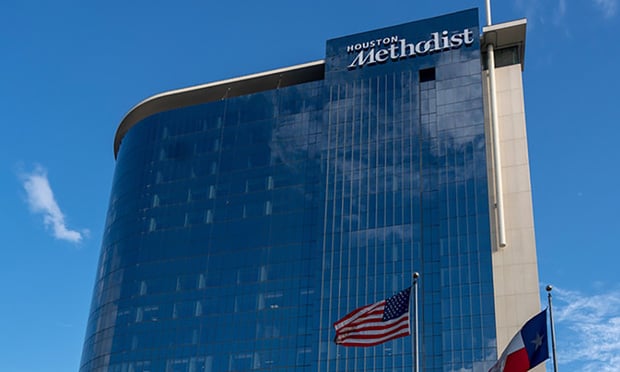 MoreAmericans are working longer to prepare for rising retirementcosts, largely driven by health care spending. (Photo:Shutterstock)
MoreAmericans are working longer to prepare for rising retirementcosts, largely driven by health care spending. (Photo:Shutterstock)
The U.S. workforce is getting older. By the year 2024, 25percent of American workers will be over the age of 55, and a thirdof those employees will be over the age of 65. Declining birthrates and higher life expectancy are contributing to the risingnumbers of older Americans in the workforce, but there is alsosomething else: retirement. More Americans are working longerto prepare for rising retirement costs, largely driven by health care spending. It's estimated that theaverage American couple will need $285,000 for medical expenses inretirement, and that's excluding long-term care.
|These rising costs are not only falling on the employee, butalso on their company. According to a report by PrudentialFinancial, older workers unable to retire cost employers up to$50,000 a year – this includes the difference between the salary ofan older worker and hiring a younger one. Further, annual healthcare costs for a 65+ year-old worker are twice those of a workeraged 45 to 54.
|Related: How to keep older workers safe and productive onthe job
|With this in mind, benefits managers need a strategy and plan inplace to care for their older workers so they can stay healthy andmake a timely transition into retirement. Here are three waysbenefits managers and HR leaders can prepare.
|Engage older employees in their health
Engagement is crucial to health care, and benefits managers whoare taking an active role in preserving the health of theiremployees have a better chance at achieving positive and scalableoutcomes. This is especially true for their older employeepopulation, as people experience a higher chance of healthcomplications as they age. But, preventive services and catchingconditions and diseases early can help. For example, doctors oftenrecommend that seniors get cancer screenings on a regular basis,but it can be a challenge to get them to follow through.
|However, the solution might be just motivating and engagingthem; research has shown motivation is a key barrier tohealthier living. Building a culture of wellness in the workplacepromoting healthy food options, increased physical activity,opportunities for socializing and connection, and appropriate lifebalance — can help to reduce the number of health issues andrelated absences, which could force them to dip into retirementsavings.
|Making clear the value of having a high quality primary careprovider is integral to higher completion of preventive servicesand better cost-effective management of chronic conditions. Andfinally, something as simple as flu shots are important inpreventing possible serious illness especially for older workers.The seasonal flu can put older employees in the hospital for days,which is not only a serious health risk, but also a huge costburden for employers.
|Help employees understand health care costs
Financial education is also essential to helping your workforceprepare for retirement, and an important part of a culture ofwellness. Employees can expect out of pocket expenses to grow asthey age, because of the fact they are older and will need to spendmore money addressing illnesses or other health conditions. Afteryears, sometimes decades, of dedicated service, benefit managersowe it to their employees to have honest conversations withretiring employees' regarding their health care plans leading up toand after retirement. Do they have a support system of family orfriends to support them if they develop a medical condition? Ifnot, do they fully understand their own financial responsibilitiesfor care after they retire?
|When employees hit age 65, they are eligible for Medicare. Likemany other pieces of our health care system, Medicare can beconfusing and daunting. Older employees will appreciate help innavigating the sign-up process. In fact, a poll by the NationwideRetirement Institute found that 70 percent of respondents said theywished they better understood Medicare coverage. Many employerswill often consider bringing in Medicare consultants or advisors todiscuss options. There are several different kinds of Medicareplans, and depending on lifestyle and retirement plan, one could besuperior to the other for a given individual.
|Another potentially confusing moment for your older workforcemay be the Social Security Full Retirement age, which has beenraised to 67; this fact, combined with a decline of availability ofemployer-sponsored retiree health insurance, results in olderemployees putting off retirement until they are eligible forMedicare.
|Educate about mental health risks
What employees might not understand is that with retirement,we've often seen an increase in depression and anxiety in the yearsafter work. Suddenly not working every day can cause some people toquestion their sense of purpose, as they have worked their wholelife to save money for retirement, and now here they are. But it'simportant to help them understand what they are "retiring into",rather than just what they are "retiring from," and the realbenefits of retirement — one of which is time. Staying active inthe community, such as volunteering in schools or at a localcharity is one way to stay involved and motivated.
|Benefits managers can have open conversations with their olderemployees to discuss the risks of depression in retirement, and theresources and communities available for new retirees. Perhapsconsider holding a Community Needs fair where organizations seekingpart time and volunteer workers come to the workplace and "recruit"soon-to-be retirees. This can be very validating for the olderworkforce and can help bridge this transition.
|Retirement is a life event to celebrate, but can be daunting foran employee who has spent the last four or five decades of theirlife working. Employees don't need to be afraid of retirement, ifthey go into it armed with the appropriate education and resourcesto help them along the way. As a benefits manager, you can be anadvocate in helping them understand what they retired into and whatthey can expect in this new chapter in their life.
|Todd Thames, PT, MD, MHA, is seniorregional medical director for Grand Rounds.
Read more:
Complete your profile to continue reading and get FREE access to BenefitsPRO, part of your ALM digital membership.
Your access to unlimited BenefitsPRO content isn’t changing.
Once you are an ALM digital member, you’ll receive:
- Critical BenefitsPRO information including cutting edge post-reform success strategies, access to educational webcasts and videos, resources from industry leaders, and informative Newsletters.
- Exclusive discounts on ALM, BenefitsPRO magazine and BenefitsPRO.com events
- Access to other award-winning ALM websites including ThinkAdvisor.com and Law.com
Already have an account? Sign In
© 2024 ALM Global, LLC, All Rights Reserved. Request academic re-use from www.copyright.com. All other uses, submit a request to [email protected]. For more information visit Asset & Logo Licensing.








